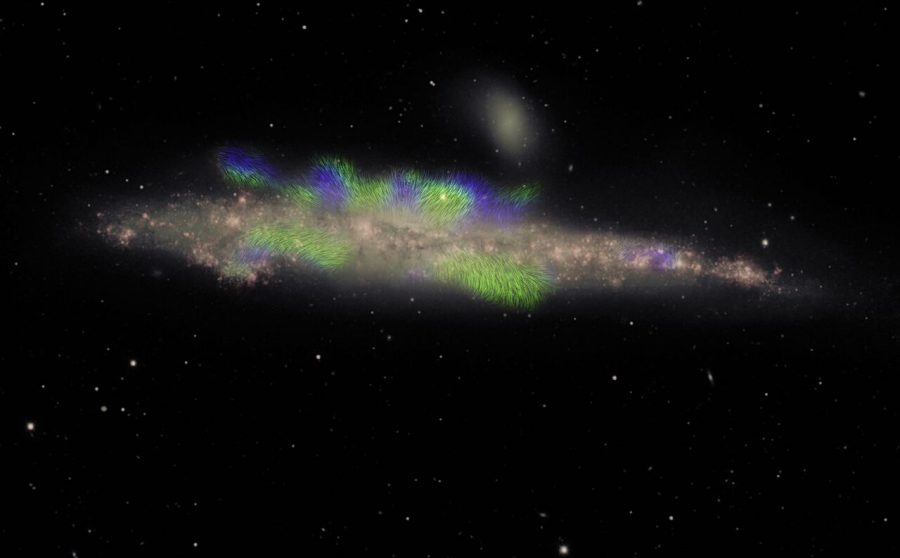NMSU astronomers contribute in imaging “Whale Galaxy”
NMSU Courtesy Image
A New Mexico State University astronomy professor and his former graduate student contributed to creating an image of the “Whale Galaxy.” The discovery was made at the Very Large Array located near Socorro.
Rene Walterbos, NMSU astronomy professor emeritus, and former NMSU graduate student, Carlos Vargas were members of an international team of astronomers working on the Continuum HAlos in Nearby Galaxies project. The project was led by by Judith Irwin from Queen’s University in Ontario.
The team involved in making this discovery spanned across three different countries — Canada, France and the United States.
The galaxy, twenty-five million light years away from Earth, is located in the Canes Venatici constellation.
According to an NMSU press release, “the spiral galaxy is seen edge-on, with its disk of stars shown in pink. The filaments, shown in green and blue, extend beyond the disk into the galaxy’s extended halo. Green indicates filaments with their magnetic field pointing roughly toward us and blue with the field pointing away. This phenomenon, with the field alternating in direction, has never before been seen in the halo of a galaxy.”
“The spectacular magnetic field structures, seen in the VLA radio data in this image, highlight the complex interactions between stars, gas, cosmic rays and magnetic fields in this galaxy,” Walterbos said in the release.
According to Walterbos, the team used different techniques to find the magnetic field including radio observations they made based on wavelength observations.
“Ultimately understanding magnetic fields is very important because they have a very important role when it comes to star formation” Walterbos said.
Vargas who graduated from NMSU with his Ph.D. in astronomy in 2018, aided in this discovery, as well.
Finding out how thermal processes interact together will help scientists figure out how stars are created at such high rates in galaxies. One major discovery was the occurrence of dynamo action when it comes to creating magnetic fields.
“The main point of the study was to see how thermal and non-thermal processes occur in galaxies,” Vargas said. “A dynamo is a way to create a magnetic field. Galaxies are made up of a lot of stars and those stars chase each other up the ensemble of the magnetic field.”
According to Walterbos, the team used different techniques to find the magnetic field including radio observations they made based on wavelength observations.
“Ultimately understanding magnetic fields is very important because they have a very important role when it comes to star formation,” Walterbos said.
Walterbos will continue his work by studying a way to capture images of other galaxies.
Vargas is continuing his work at the University of Arizona under Erika Hamden, Ph.D. Their research will consist of developing new material for future NASA space missions.


